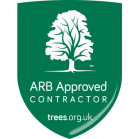<"div" class="fusion-layout-column fusion_builder_column fusion-builder-column-8 fusion-flex-column fusion-flex-align-self-"auto" "" fusion-no-small-visibility fusion-no-large-visibility fusion-column-inner-bg-wrapper fusion-animated" style="--awb-z-index:"";--awb-z-index-hover:"";--awb-padding-top:;--awb-padding-right:;--awb-padding-bottom:;--awb-padding-left:;--awb-padding-top-medium:;--awb-padding-right-medium:;--awb-padding-bottom-medium:;--awb-padding-left-medium:;--awb-padding-top-small:;--awb-padding-right-small:;--awb-padding-bottom-small:;--awb-padding-left-small:;--awb-overflow:"";--awb-inner-bg-color:"";--awb-inner-bg-color-hover:"";--awb-inner-bg-color-medium:"";--awb-inner-bg-color-medium-hover:"";--awb-inner-bg-color-small:"";--awb-inner-bg-color-small-hover:"";--awb-inner-bg-image:"" "0"%,"" "100"%),url(http://"");;--awb-inner-bg-image-medium:"" "0"%,"" "100"%),url(http://"");;--awb-inner-bg-image-small:"" "0"%,"" "100"%),url(http://"");;--awb-inner-bg-position:"left;--awb-inner-bg-position-medium:"";--awb-inner-bg-position-small:"";--awb-inner-bg-blend:"none";--awb-inner-bg-blend-medium:"";--awb-inner-bg-blend-small:"";--awb-inner-bg-repeat:"no-repeat";--awb-inner-bg-repeat-medium:"";--awb-inner-bg-repeat-small:"";--awb-inner-bg-size:"";--awb-inner-bg-size-medium:"";--awb-inner-bg-size-small:"";--awb-transform-origin:"";--awb-transition:filter "300"ms "ease", transform "300"ms "ease", background-color "300"ms "ease", border-color "300"ms "ease";--awb-border-color:"";--awb-border-color-hover:"";--awb-border-top:;--awb-border-right:;--awb-border-bottom:;--awb-border-left:;--awb-border-style:"solid";--awb-border-radius: ;--awb-inner-bg-border-radius: ;--awb-inner-bg-overflow:hidden;--awb-transform:scaleX("1") scaleY("1");--awb-transform-hover:scaleX("1") scaleY("1");--awb-filter:hue-rotate("0"deg) saturate("100"%) brightness("100"%) contrast("100"%) invert("0"%) sepia("0"%) opacity("100"%) blur("0"px);--awb-filter-transition:filter 0.3s ease;--awb-filter-hover:hue-rotate("0"deg) saturate("100"%) brightness("100"%) contrast("100"%) invert("0"%) sepia("0"%) opacity("100"%) blur("0"px);--awb-flex-grow:"";--awb-flex-shrink:"";--awb-margin-top-large:;--awb-spacing-right-large:;--awb-margin-bottom-large:;--awb-spacing-left-large:;--awb-order-medium:0;--awb-flex-grow-medium:"";--awb-flex-shrink-medium:"";--awb-margin-top-medium:"";--awb-spacing-right-medium:;--awb-margin-bottom-medium:"";--awb-spacing-left-medium:;--awb-order-small:0;--awb-flex-grow-small:"";--awb-flex-shrink-small:"";--awb-margin-top-small:"";--awb-spacing-right-small:;--awb-margin-bottom-small:"";--awb-spacing-left-small:;" data-animationType="""In"left"" data-animationDuration=""0.3"" data-animationOffset="""" id="""" data-scroll-devices=""small-visibility,medium-visibility,large-visibility"">
<"div" class="fusion-layout-column fusion_builder_column fusion-builder-column-9 fusion-flex-column fusion-flex-align-self-"auto" "" fusion-no-small-visibility fusion-no-large-visibility fusion-column-inner-bg-wrapper fusion-animated" style="--awb-z-index:"";--awb-z-index-hover:"";--awb-padding-top:;--awb-padding-right:;--awb-padding-bottom:;--awb-padding-left:;--awb-padding-top-medium:;--awb-padding-right-medium:;--awb-padding-bottom-medium:;--awb-padding-left-medium:;--awb-padding-top-small:;--awb-padding-right-small:;--awb-padding-bottom-small:;--awb-padding-left-small:;--awb-overflow:"";--awb-inner-bg-color:"";--awb-inner-bg-color-hover:"";--awb-inner-bg-color-medium:"";--awb-inner-bg-color-medium-hover:"";--awb-inner-bg-color-small:"";--awb-inner-bg-color-small-hover:"";--awb-inner-bg-image:"" "0"%,"" "100"%),url(http://"");;--awb-inner-bg-image-medium:"" "0"%,"" "100"%),url(http://"");;--awb-inner-bg-image-small:"" "0"%,"" "100"%),url(http://"");;--awb-inner-bg-position:"left;--awb-inner-bg-position-medium:"";--awb-inner-bg-position-small:"";--awb-inner-bg-blend:"none";--awb-inner-bg-blend-medium:"";--awb-inner-bg-blend-small:"";--awb-inner-bg-repeat:"no-repeat";--awb-inner-bg-repeat-medium:"";--awb-inner-bg-repeat-small:"";--awb-inner-bg-size:"";--awb-inner-bg-size-medium:"";--awb-inner-bg-size-small:"";--awb-transform-origin:"";--awb-transition:filter "300"ms "ease", transform "300"ms "ease", background-color "300"ms "ease", border-color "300"ms "ease";--awb-border-color:"";--awb-border-color-hover:"";--awb-border-top:;--awb-border-right:;--awb-border-bottom:;--awb-border-left:;--awb-border-style:"solid";--awb-border-radius: ;--awb-inner-bg-border-radius: ;--awb-inner-bg-overflow:hidden;--awb-transform:scaleX("1") scaleY("1");--awb-transform-hover:scaleX("1") scaleY("1");--awb-filter:hue-rotate("0"deg) saturate("100"%) brightness("100"%) contrast("100"%) invert("0"%) sepia("0"%) opacity("100"%) blur("0"px);--awb-filter-transition:filter 0.3s ease;--awb-filter-hover:hue-rotate("0"deg) saturate("100"%) brightness("100"%) contrast("100"%) invert("0"%) sepia("0"%) opacity("100"%) blur("0"px);--awb-flex-grow:"";--awb-flex-shrink:"";--awb-margin-top-large:;--awb-spacing-right-large:;--awb-margin-bottom-large:;--awb-spacing-left-large:;--awb-order-medium:0;--awb-flex-grow-medium:"";--awb-flex-shrink-medium:"";--awb-margin-top-medium:"";--awb-spacing-right-medium:;--awb-margin-bottom-medium:"";--awb-spacing-left-medium:;--awb-order-small:0;--awb-flex-grow-small:"";--awb-flex-shrink-small:"";--awb-margin-top-small:"";--awb-spacing-right-small:;--awb-margin-bottom-small:"";--awb-spacing-left-small:;" data-animationType="""In"left"" data-animationDuration=""0.3"" data-animationOffset="""" id="""" data-scroll-devices=""small-visibility,medium-visibility,large-visibility"">
<"div" class="fusion-layout-column fusion_builder_column fusion-builder-column-10 fusion-flex-column fusion-flex-align-self-"auto" "" fusion-no-small-visibility fusion-no-large-visibility fusion-column-inner-bg-wrapper fusion-animated" style="--awb-z-index:"";--awb-z-index-hover:"";--awb-padding-top:;--awb-padding-right:;--awb-padding-bottom:;--awb-padding-left:;--awb-padding-top-medium:;--awb-padding-right-medium:;--awb-padding-bottom-medium:;--awb-padding-left-medium:;--awb-padding-top-small:;--awb-padding-right-small:;--awb-padding-bottom-small:;--awb-padding-left-small:;--awb-overflow:"";--awb-inner-bg-color:"";--awb-inner-bg-color-hover:"";--awb-inner-bg-color-medium:"";--awb-inner-bg-color-medium-hover:"";--awb-inner-bg-color-small:"";--awb-inner-bg-color-small-hover:"";--awb-inner-bg-image:"" "0"%,"" "100"%),url(http://"");;--awb-inner-bg-image-medium:"" "0"%,"" "100"%),url(http://"");;--awb-inner-bg-image-small:"" "0"%,"" "100"%),url(http://"");;--awb-inner-bg-position:"left;--awb-inner-bg-position-medium:"";--awb-inner-bg-position-small:"";--awb-inner-bg-blend:"none";--awb-inner-bg-blend-medium:"";--awb-inner-bg-blend-small:"";--awb-inner-bg-repeat:"no-repeat";--awb-inner-bg-repeat-medium:"";--awb-inner-bg-repeat-small:"";--awb-inner-bg-size:"";--awb-inner-bg-size-medium:"";--awb-inner-bg-size-small:"";--awb-transform-origin:"";--awb-transition:filter "300"ms "ease", transform "300"ms "ease", background-color "300"ms "ease", border-color "300"ms "ease";--awb-border-color:"";--awb-border-color-hover:"";--awb-border-top:;--awb-border-right:;--awb-border-bottom:;--awb-border-left:;--awb-border-style:"solid";--awb-border-radius: ;--awb-inner-bg-border-radius: ;--awb-inner-bg-overflow:hidden;--awb-transform:scaleX("1") scaleY("1");--awb-transform-hover:scaleX("1") scaleY("1");--awb-filter:hue-rotate("0"deg) saturate("100"%) brightness("100"%) contrast("100"%) invert("0"%) sepia("0"%) opacity("100"%) blur("0"px);--awb-filter-transition:filter 0.3s ease;--awb-filter-hover:hue-rotate("0"deg) saturate("100"%) brightness("100"%) contrast("100"%) invert("0"%) sepia("0"%) opacity("100"%) blur("0"px);--awb-flex-grow:"";--awb-flex-shrink:"";--awb-margin-top-large:;--awb-spacing-right-large:;--awb-margin-bottom-large:;--awb-spacing-left-large:;--awb-order-medium:0;--awb-flex-grow-medium:"";--awb-flex-shrink-medium:"";--awb-margin-top-medium:"";--awb-spacing-right-medium:;--awb-margin-bottom-medium:"";--awb-spacing-left-medium:;--awb-order-small:0;--awb-flex-grow-small:"";--awb-flex-shrink-small:"";--awb-margin-top-small:"";--awb-spacing-right-small:;--awb-margin-bottom-small:"";--awb-spacing-left-small:;" data-animationType="""In"left"" data-animationDuration=""0.3"" data-animationOffset="""" id="""" data-scroll-devices=""small-visibility,medium-visibility,large-visibility"">
<"div" class="fusion-layout-column fusion_builder_column fusion-builder-column-11 fusion-flex-column fusion-flex-align-self-"auto" "" fusion-no-small-visibility fusion-no-large-visibility fusion-column-inner-bg-wrapper fusion-animated" style="--awb-z-index:"";--awb-z-index-hover:"";--awb-padding-top:;--awb-padding-right:;--awb-padding-bottom:;--awb-padding-left:;--awb-padding-top-medium:;--awb-padding-right-medium:;--awb-padding-bottom-medium:;--awb-padding-left-medium:;--awb-padding-top-small:;--awb-padding-right-small:;--awb-padding-bottom-small:;--awb-padding-left-small:;--awb-overflow:"";--awb-inner-bg-color:"";--awb-inner-bg-color-hover:"";--awb-inner-bg-color-medium:"";--awb-inner-bg-color-medium-hover:"";--awb-inner-bg-color-small:"";--awb-inner-bg-color-small-hover:"";--awb-inner-bg-image:"" "0"%,"" "100"%),url(http://"");;--awb-inner-bg-image-medium:"" "0"%,"" "100"%),url(http://"");;--awb-inner-bg-image-small:"" "0"%,"" "100"%),url(http://"");;--awb-inner-bg-position:"left;--awb-inner-bg-position-medium:"";--awb-inner-bg-position-small:"";--awb-inner-bg-blend:"none";--awb-inner-bg-blend-medium:"";--awb-inner-bg-blend-small:"";--awb-inner-bg-repeat:"no-repeat";--awb-inner-bg-repeat-medium:"";--awb-inner-bg-repeat-small:"";--awb-inner-bg-size:"";--awb-inner-bg-size-medium:"";--awb-inner-bg-size-small:"";--awb-transform-origin:"";--awb-transition:filter "300"ms "ease", transform "300"ms "ease", background-color "300"ms "ease", border-color "300"ms "ease";--awb-border-color:"";--awb-border-color-hover:"";--awb-border-top:;--awb-border-right:;--awb-border-bottom:;--awb-border-left:;--awb-border-style:"solid";--awb-border-radius: ;--awb-inner-bg-border-radius: ;--awb-inner-bg-overflow:hidden;--awb-transform:scaleX("1") scaleY("1");--awb-transform-hover:scaleX("1") scaleY("1");--awb-filter:hue-rotate("0"deg) saturate("100"%) brightness("100"%) contrast("100"%) invert("0"%) sepia("0"%) opacity("100"%) blur("0"px);--awb-filter-transition:filter 0.3s ease;--awb-filter-hover:hue-rotate("0"deg) saturate("100"%) brightness("100"%) contrast("100"%) invert("0"%) sepia("0"%) opacity("100"%) blur("0"px);--awb-flex-grow:"";--awb-flex-shrink:"";--awb-margin-top-large:;--awb-spacing-right-large:;--awb-margin-bottom-large:;--awb-spacing-left-large:;--awb-order-medium:0;--awb-flex-grow-medium:"";--awb-flex-shrink-medium:"";--awb-margin-top-medium:"";--awb-spacing-right-medium:;--awb-margin-bottom-medium:"";--awb-spacing-left-medium:;--awb-order-small:0;--awb-flex-grow-small:"";--awb-flex-shrink-small:"";--awb-margin-top-small:"";--awb-spacing-right-small:;--awb-margin-bottom-small:"";--awb-spacing-left-small:;" data-animationType="""In"left"" data-animationDuration=""0.3"" data-animationOffset="""" id="""" data-scroll-devices=""small-visibility,medium-visibility,large-visibility"">
<"div" class="fusion-layout-column fusion_builder_column fusion-builder-column-12 fusion-flex-column fusion-flex-align-self-"auto" "" fusion-no-small-visibility fusion-no-large-visibility fusion-column-inner-bg-wrapper fusion-animated" style="--awb-z-index:"";--awb-z-index-hover:"";--awb-padding-top:;--awb-padding-right:;--awb-padding-bottom:;--awb-padding-left:;--awb-padding-top-medium:;--awb-padding-right-medium:;--awb-padding-bottom-medium:;--awb-padding-left-medium:;--awb-padding-top-small:;--awb-padding-right-small:;--awb-padding-bottom-small:;--awb-padding-left-small:;--awb-overflow:"";--awb-inner-bg-color:"";--awb-inner-bg-color-hover:"";--awb-inner-bg-color-medium:"";--awb-inner-bg-color-medium-hover:"";--awb-inner-bg-color-small:"";--awb-inner-bg-color-small-hover:"";--awb-inner-bg-image:"" "0"%,"" "100"%),url(http://"");;--awb-inner-bg-image-medium:"" "0"%,"" "100"%),url(http://"");;--awb-inner-bg-image-small:"" "0"%,"" "100"%),url(http://"");;--awb-inner-bg-position:"left;--awb-inner-bg-position-medium:"";--awb-inner-bg-position-small:"";--awb-inner-bg-blend:"none";--awb-inner-bg-blend-medium:"";--awb-inner-bg-blend-small:"";--awb-inner-bg-repeat:"no-repeat";--awb-inner-bg-repeat-medium:"";--awb-inner-bg-repeat-small:"";--awb-inner-bg-size:"";--awb-inner-bg-size-medium:"";--awb-inner-bg-size-small:"";--awb-transform-origin:"";--awb-transition:filter "300"ms "ease", transform "300"ms "ease", background-color "300"ms "ease", border-color "300"ms "ease";--awb-border-color:"";--awb-border-color-hover:"";--awb-border-top:;--awb-border-right:;--awb-border-bottom:;--awb-border-left:;--awb-border-style:"solid";--awb-border-radius: ;--awb-inner-bg-border-radius: ;--awb-inner-bg-overflow:hidden;--awb-transform:scaleX("1") scaleY("1");--awb-transform-hover:scaleX("1") scaleY("1");--awb-filter:hue-rotate("0"deg) saturate("100"%) brightness("100"%) contrast("100"%) invert("0"%) sepia("0"%) opacity("100"%) blur("0"px);--awb-filter-transition:filter 0.3s ease;--awb-filter-hover:hue-rotate("0"deg) saturate("100"%) brightness("100"%) contrast("100"%) invert("0"%) sepia("0"%) opacity("100"%) blur("0"px);--awb-flex-grow:"";--awb-flex-shrink:"";--awb-margin-top-large:;--awb-spacing-right-large:;--awb-margin-bottom-large:;--awb-spacing-left-large:;--awb-order-medium:0;--awb-flex-grow-medium:"";--awb-flex-shrink-medium:"";--awb-margin-top-medium:"";--awb-spacing-right-medium:;--awb-margin-bottom-medium:"";--awb-spacing-left-medium:;--awb-order-small:0;--awb-flex-grow-small:"";--awb-flex-shrink-small:"";--awb-margin-top-small:"";--awb-spacing-right-small:;--awb-margin-bottom-small:"";--awb-spacing-left-small:;" data-animationType="""In"left"" data-animationDuration=""0.3"" data-animationOffset="""" id="""" data-scroll-devices=""small-visibility,medium-visibility,large-visibility"">
<"div" class="fusion-layout-column fusion_builder_column fusion-builder-column-13 fusion-flex-column fusion-flex-align-self-"auto" "" fusion-no-small-visibility fusion-no-large-visibility fusion-column-inner-bg-wrapper fusion-animated" style="--awb-z-index:"";--awb-z-index-hover:"";--awb-padding-top:;--awb-padding-right:;--awb-padding-bottom:;--awb-padding-left:;--awb-padding-top-medium:;--awb-padding-right-medium:;--awb-padding-bottom-medium:;--awb-padding-left-medium:;--awb-padding-top-small:;--awb-padding-right-small:;--awb-padding-bottom-small:;--awb-padding-left-small:;--awb-overflow:"";--awb-inner-bg-color:"";--awb-inner-bg-color-hover:"";--awb-inner-bg-color-medium:"";--awb-inner-bg-color-medium-hover:"";--awb-inner-bg-color-small:"";--awb-inner-bg-color-small-hover:"";--awb-inner-bg-image:"" "0"%,"" "100"%),url(http://"");;--awb-inner-bg-image-medium:"" "0"%,"" "100"%),url(http://"");;--awb-inner-bg-image-small:"" "0"%,"" "100"%),url(http://"");;--awb-inner-bg-position:"left;--awb-inner-bg-position-medium:"";--awb-inner-bg-position-small:"";--awb-inner-bg-blend:"none";--awb-inner-bg-blend-medium:"";--awb-inner-bg-blend-small:"";--awb-inner-bg-repeat:"no-repeat";--awb-inner-bg-repeat-medium:"";--awb-inner-bg-repeat-small:"";--awb-inner-bg-size:"";--awb-inner-bg-size-medium:"";--awb-inner-bg-size-small:"";--awb-transform-origin:"";--awb-transition:filter "300"ms "ease", transform "300"ms "ease", background-color "300"ms "ease", border-color "300"ms "ease";--awb-border-color:"";--awb-border-color-hover:"";--awb-border-top:;--awb-border-right:;--awb-border-bottom:;--awb-border-left:;--awb-border-style:"solid";--awb-border-radius: ;--awb-inner-bg-border-radius: ;--awb-inner-bg-overflow:hidden;--awb-transform:scaleX("1") scaleY("1");--awb-transform-hover:scaleX("1") scaleY("1");--awb-filter:hue-rotate("0"deg) saturate("100"%) brightness("100"%) contrast("100"%) invert("0"%) sepia("0"%) opacity("100"%) blur("0"px);--awb-filter-transition:filter 0.3s ease;--awb-filter-hover:hue-rotate("0"deg) saturate("100"%) brightness("100"%) contrast("100"%) invert("0"%) sepia("0"%) opacity("100"%) blur("0"px);--awb-flex-grow:"";--awb-flex-shrink:"";--awb-margin-top-large:;--awb-spacing-right-large:;--awb-margin-bottom-large:;--awb-spacing-left-large:;--awb-order-medium:0;--awb-flex-grow-medium:"";--awb-flex-shrink-medium:"";--awb-margin-top-medium:"";--awb-spacing-right-medium:;--awb-margin-bottom-medium:"";--awb-spacing-left-medium:;--awb-order-small:0;--awb-flex-grow-small:"";--awb-flex-shrink-small:"";--awb-margin-top-small:"";--awb-spacing-right-small:;--awb-margin-bottom-small:"";--awb-spacing-left-small:;" data-animationType="""In"left"" data-animationDuration=""0.3"" data-animationOffset="""" id="""" data-scroll-devices=""small-visibility,medium-visibility,large-visibility"">
<"div" class="fusion-layout-column fusion_builder_column fusion-builder-column-14 fusion-flex-column fusion-flex-align-self-"auto" "" fusion-no-small-visibility fusion-no-large-visibility fusion-column-inner-bg-wrapper fusion-animated" style="--awb-z-index:"";--awb-z-index-hover:"";--awb-padding-top:;--awb-padding-right:;--awb-padding-bottom:;--awb-padding-left:;--awb-padding-top-medium:;--awb-padding-right-medium:;--awb-padding-bottom-medium:;--awb-padding-left-medium:;--awb-padding-top-small:;--awb-padding-right-small:;--awb-padding-bottom-small:;--awb-padding-left-small:;--awb-overflow:"";--awb-inner-bg-color:"";--awb-inner-bg-color-hover:"";--awb-inner-bg-color-medium:"";--awb-inner-bg-color-medium-hover:"";--awb-inner-bg-color-small:"";--awb-inner-bg-color-small-hover:"";--awb-inner-bg-image:"" "0"%,"" "100"%),url(http://"");;--awb-inner-bg-image-medium:"" "0"%,"" "100"%),url(http://"");;--awb-inner-bg-image-small:"" "0"%,"" "100"%),url(http://"");;--awb-inner-bg-position:"left;--awb-inner-bg-position-medium:"";--awb-inner-bg-position-small:"";--awb-inner-bg-blend:"none";--awb-inner-bg-blend-medium:"";--awb-inner-bg-blend-small:"";--awb-inner-bg-repeat:"no-repeat";--awb-inner-bg-repeat-medium:"";--awb-inner-bg-repeat-small:"";--awb-inner-bg-size:"";--awb-inner-bg-size-medium:"";--awb-inner-bg-size-small:"";--awb-transform-origin:"";--awb-transition:filter "300"ms "ease", transform "300"ms "ease", background-color "300"ms "ease", border-color "300"ms "ease";--awb-border-color:"";--awb-border-color-hover:"";--awb-border-top:;--awb-border-right:;--awb-border-bottom:;--awb-border-left:;--awb-border-style:"solid";--awb-border-radius: ;--awb-inner-bg-border-radius: ;--awb-inner-bg-overflow:hidden;--awb-transform:scaleX("1") scaleY("1");--awb-transform-hover:scaleX("1") scaleY("1");--awb-filter:hue-rotate("0"deg) saturate("100"%) brightness("100"%) contrast("100"%) invert("0"%) sepia("0"%) opacity("100"%) blur("0"px);--awb-filter-transition:filter 0.3s ease;--awb-filter-hover:hue-rotate("0"deg) saturate("100"%) brightness("100"%) contrast("100"%) invert("0"%) sepia("0"%) opacity("100"%) blur("0"px);--awb-flex-grow:"";--awb-flex-shrink:"";--awb-margin-top-large:;--awb-spacing-right-large:;--awb-margin-bottom-large:;--awb-spacing-left-large:;--awb-order-medium:0;--awb-flex-grow-medium:"";--awb-flex-shrink-medium:"";--awb-margin-top-medium:"";--awb-spacing-right-medium:;--awb-margin-bottom-medium:"";--awb-spacing-left-medium:;--awb-order-small:0;--awb-flex-grow-small:"";--awb-flex-shrink-small:"";--awb-margin-top-small:"";--awb-spacing-right-small:;--awb-margin-bottom-small:"";--awb-spacing-left-small:;" data-animationType="""In"left"" data-animationDuration=""0.3"" data-animationOffset="""" id="""" data-scroll-devices=""small-visibility,medium-visibility,large-visibility"">









